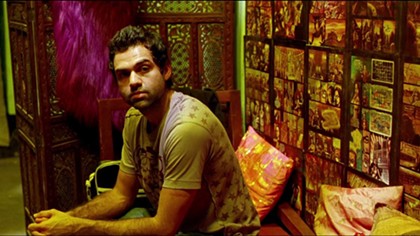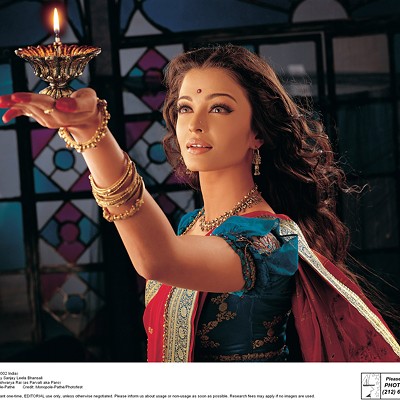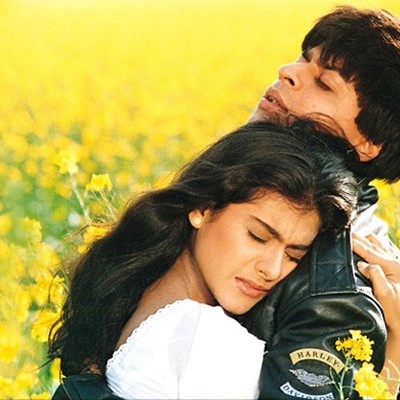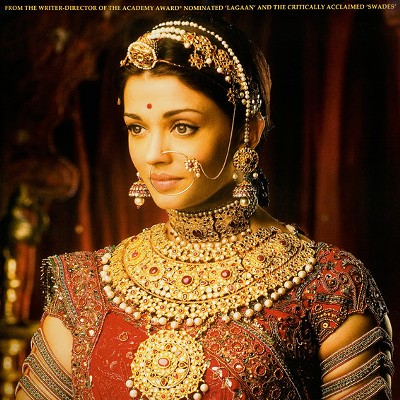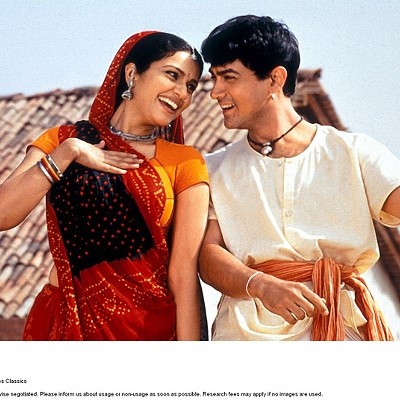Arts Blog
Eastman Museum saves collection of Indian cinema
The George Eastman Museum announced this week it had acquired more than 700 Bollywood, Malayalam, Punjabi, Tamil, and Telugu films, a wide array of related audio recordings, as well as 6,000 film posters. This announcement came shortly after Eastman's announcement of the exciting acquisition of South African artist William Kentridge's oeuvre. The donation of the Bollywood collection makes Eastman Museum the owner and caretaker of the world's largest collection of contemporary Indian cinema held by any museum or film archive.
The collection consists of 775 prints representing 597 film titles, all in 35mm format and made between 1999 and 2013, and about 6,000 film posters. The collection's films come from the Hindi-language film industry commonly known as "Bollywood," as well as Malayalam, Punjabi, Tamil, and Telugu productions. Many of the titles are from acclaimed masters of Indian cinema, such as Mani Ratnam, Ashutosh Gowariker, Anurag Kashyap, Nagesh Kukunoor, and Sanjay Leela Bhansali.
In addition to exposing Rochester audiences to the magical and melodramatic Bollywood aesthetic, the collection contains a wide array of diverse languages, including Assamese, Bengali, Gujarati, Hindi, Kannada, Malayalam, Marathi, Punjabi, Tamil, Telugu, and Urdu.
This major collection was discovered in late 2014 in an abandoned California multiplex. The prints had been shipped from India for release in specialized theaters in the United States, but since the multiplex was unable to convert to digital projection, it closed in August 2013. All of the release prints, posters, and projection equipment were left behind.
Dino Everett, archivist of the Hugh M. Hefner Moving Image Archive at the University of Southern California's School of Cinematic Arts, knew the collection would find an appreciative home in Rochester. Everett alerted the Eastman Museum to the existence of the films and posters, and with financial assistance from the Louis B. Mayer Foundation, Eastman Museum rescued the collection.
If the Eastman Museum had not taken ownership of the material and provided an appropriate environment for preserving the collection, it would have been destroyed when the multiplex was razed earlier this year.
"The Eastman Museum has a longstanding interest in South Asian cinema, dating back to the founding curator of our film collection, James Card, and his determined efforts to obtain major works of Indian cinema," said Paolo Cherchi Usai, senior curator of the Museum's Moving Image Department.
"As part of our museum's collection, they will be an invaluable resource for exhibition and scholarly research in Indian cinema," he said.
Eastman Museum's dedication to preservation plays a key role here, as Indian film studios do not actively preserve their prints after theatrical and home video release, meaning that many titles are lost after their initial premiere. Though the Indian motion picture industry is an important center of cinematic creativity in the world, underfunded collecting institutions in India are unable to offer preservation at the level that Eastman Museum can.
"Having rescued all those prints from destruction is not only a heroic feat," said Shivendra Singh Dungarpur, founder and director of the Film Heritage Foundation in Mumbai. "It is a strong commitment to preserve and celebrate the beauty of Indian cinema as part of the world's cultural patrimony. We look forward to working with the Eastman Museum towards a broader and deeper knowledge of the creative energy displayed by contemporary Indian filmmakers through their work."
For more information, visit eastman.org.
